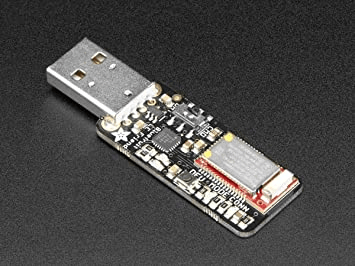Over the years of working on QZ Fitness ( http://qzfitness.com ), I believe I can now consider myself an expert in Bluetooth technology. I have reverse-engineered hundreds of different Bluetooth protocols to make Bluetooth a standard, if not the only standard, in the fitness world.

Currently, I’m tackling one of the last remaining problems: compatibility with Garmin devices. Garmin devices have the ability to connect to both ANT+ and Bluetooth sensors. QZ is already compatible with ANT+ on Android, but unfortunately, iOS does not have ANT+ hardware capabilities. QZ can read heart rate from a Garmin Watch via ANT+ and even send power, watts, and cadence as a sensor.
To overcome the lack of compatibility between iOS and Garmin devices, I delved into debugging Bluetooth compatibility. After some development, I managed to connect any type of virtual sensor from my QZ app to a Garmin Watch or Edge cycling computer using:
– MacOS
– Raspberry Pi
– ESP32
Through Bluetooth sniffer Adafruit ( https://www.adafruit.com/product/2269 ),

I discovered that Garmin devices require sensors to connect via a public address and not a random one. iOS and Android versions 5 and up do not allow Bluetooth 4.0 advertising with a public address for privacy reasons. (more info here: https://stackoverflow.com/questions/28602672/android-5-static-bluetooth-mac-address-for-ble-advertising )
For the nerds, you can find the C code for ESP32 here, which allows you to diagnose the issue on the fly. https://gist.github.com/cagnulein/b04b6d87e8b5d318aa59b510cf8b234e

So, I am formally requesting that Garmin remove this unnecessary and silly control so that any virtual device can connect. I will update this post with Garmin’s response.
In the meantime, many may wonder why I don’t simply develop a Garmin Connect IQ application that reads values from QZ and saves them to the Garmin workout. The answer is simple: Garmin has another limitation. IQ apps cannot write data to standard metrics like heart rate, power, cadence, speed, and distance. They can only use custom fields (more details here: https://forums.garmin.com/developer/connect-iq/f/discussion/4854/fitcontributor-nativenum-functionality ) This means that a workout created by an IQ application will not show metrics detected by QZ or third-party apps on Garmin Connect.
This additional limitation by Garmin makes sense in the outdoor sports world, where Garmin devices with their fantastic sensors can collect metrics better than any other device or app. However, in the indoor world, Garmin cannot connect to devices with proprietary Bluetooth or Wi-Fi protocols like QZ does. Therefore, this additional limitation is simply ridiculous.
Let me know what you think.
More details here: robertoviola.cloud/.../



